The Lotus Temple in Delhi has become one of India’s most recognized monuments, and it is one of the world’s most famous Baháʼí Houses of Worship. Each year, millions of tourists visit the Lotus Temple in Delhi, considered an architectural wonder inspired by a lotus flower. The lotus design is made from white marble, and the adjacent prayer halls are peaceful and calming. The message of the Lotus Temple is universal in its message of unity and peace. As an important landmark and architectural wonder, it has become a symbol of unity and spirituality in Delhi, India.
This complete guide will cover everything you need to know about visiting the Lotus Temple, including providing a brief history, detailing the architecture, and giving visiting tips and more.
History and Significance of Lotus Temple
The Lotus Temple is a Baháʼí House of Worship, completed in 1986, and it serves as the mother temple of the Baháʼí faith in the Indian subcontinent. While the Baháʼí faith originated in Iran in the mid-19th century, it is an independent world religion—not an offshoot or cult—with core beliefs centered on unity of God, religion, and humanity. The temple’s design reflects the Baháʼí principle that people of all faiths are welcome. There are no rituals, idols, or sermons—just a tranquil space for prayer and reflection.
- Architect: Fariborz Sahba, an Iranian architect
- Structural Engineer: Flint and Neill (UK)
- Construction Facts:
- 10,000 marble panels
- Over 800 workers contributed
- Completed in 10 years
Since its opening, the temple has welcomed over 100 million visitors, making it one of the most visited religious sites globally.
Lotus Temple: Unique Architecture and Design Details
The Lotus Temple is a globally recognized monument for its extraordinary design and structural ingenuity. The lotus flower is a powerful and frequent symbol of purity and spirituality across many religions, and the temple is constructed of the following features:
- 27 marble petals constructed in groups of three to assemble nine sides.
- A central Prayer Hall that accommodates up to 2,500 people and has no internal pillars.
- Natural light streaming down from the glass-topped ribs, creating a special peaceful ambiance within the temple.
- Nine reflecting pools and landscaped gardens around the temple, adding to the aesthetic appeal.
- Solar power system producing some of the temple’s electricity.
- Award winning design by the Institution of Structural Engineers (1987) and Gabriela Gunter awarded by GlobArt Academy (2000).
Location and How to Reach Lotus Temple
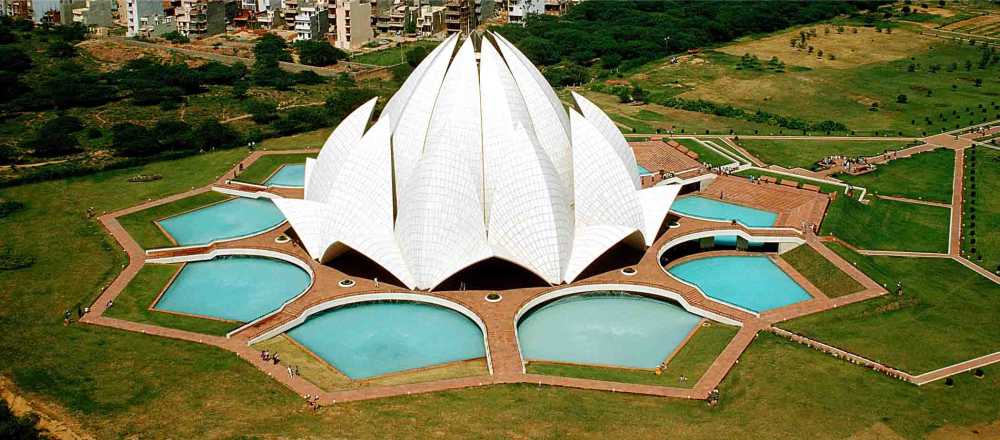
The Lotus Temple is in the heart of Delhi, minutes from the city center. It’s a 30-45 minute drive from the closest Metro train station at Kalkaji Mandir on the Violet Line (see Delhi Metro train map).
- Location: Lotus Temple Rd, Bahapur, Kalkaji, New Delhi, Delhi 110019
- Nearest Metro Station: Kalkaji Mandir (Violet Line). It’s a short walk of about 10 minutes.
- By Taxi/Car: Around 30-45 minutes from Connaught Place or India Gate.
- Public Transport: Auto-rickshaws, buses, and cycle rickshaws are very easy to find.
Tip: Book a comfortable taxi with Car Booking for a trouble-free journey for the attractions of Lotus Temple and other surroundings.
Visiting Timings and Entry Details
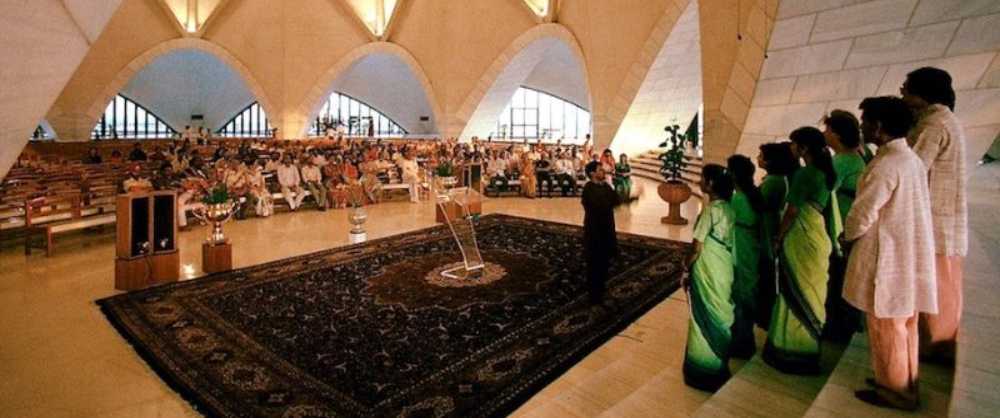
- Lotus Temple Entry Fee: Free for all visitors
- Timings of Lotus Temple:
- Summer (April–September): 9:00 AM – 7:00 PM
- Winter (October–March): 9:00 AM – 5:30 PM
- Closed on Mondays
Best Time to Visit: Early morning or late evening to avoid huge crowds. Expect long queues on weekends and holidays. For a peaceful experience, visit on a weekday morning or just before closing hours.
Rules and Etiquette
Before entering the Prayer Hall:
- Remove your shoes (shoe racks are available).
- Maintain silence: The hall is meant for meditation and quiet reflection.
- Photography is not allowed inside the Prayer Hall.
Volunteers are present to guide visitors and offer a brief overview of the Baháʼí faith. The temple generally does not allow children under 12 inside the Prayer Hall to maintain silence and serenity.
What Can You See at the Lotus Temple?
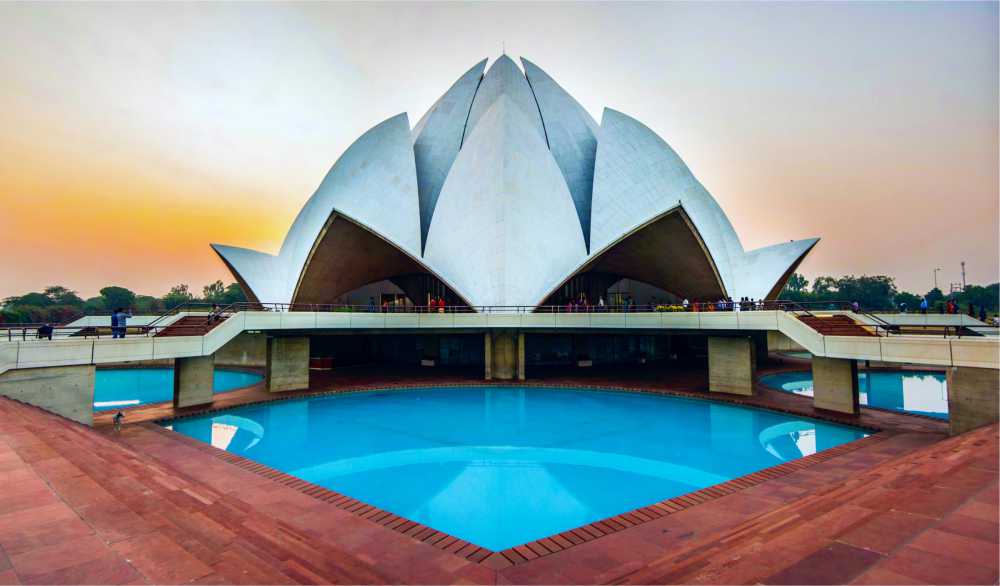
To understand how the Lotus Temple came to be, first, you must know what it looks like. The exterior of the temple looks like a lotus plant and comprises of concrete in pieces of marble. The structure was named for its symbolic importance to many religions, including Buddhism, Jainism, Hinduism, and Islam.
With 9 entrances, the Lotus Temple has a unique design that stems from the mysticism of the number nine, one of the most revered numbers in the Baha’i faith.
You can visit the Prayer Hall from the outside by those who enter. However, what’s amazing are the stark white walls. There are no pillars or beams inside and only 2,500 people can fit into it. The roof has glass and lets in natural light.
Nearby Attractions to Visit
Make the most of your trip by exploring these nearby places:
- Kalkaji Temple – A famous Hindu temple dedicated to Goddess Kali
- ISKCON Temple Delhi – A spiritual retreat with beautiful architecture
- Nehru Place Market – Popular for electronics and street food
- Humayun’s Tomb – UNESCO World Heritage Site within 15 minutes drive
Interesting Facts About Lotus Temple
- Recognized as one of the “Most Visited Buildings in the World.”
- Has hosted global interfaith gatherings and peace meetings.
- Uses solar energy, reducing electricity costs by 40%.
- Inspired by the Sydney Opera House’s engineering techniques.
Conclusion
The Lotus Temple in Delhi is more than only one architectural surprise – it is a symbol of peace, unity and spirituality. Whether you are ready for its amazing marble petals, cool atmosphere, or intensive message of inclusion, visiting this Baháʼí House of worship is an experience that you do not forget.
Plan your journey wisely, follow visitors rules, and immerse yourself in the calm and beauty of one of the most viewed and acclaimed places in India.
FAQ’s
The Baháʼí faith does not worship a specific deity in an anthropomorphic form. The temple is open to people of all religions to meditate or pray to their concept of God.
The architectural design, with 27 marble petals arranged in groups of three to form nine sides, is both symbolic and functional. Its openness to all faiths and the absence of rituals make it a rare spiritual space.
Only outside the main Prayer Hall. The Lotus Temple strictly prohibits photography and videography within its premises.
The temple welcomes children on the grounds, but it may not allow them inside the main Prayer Hall if they’re under 12 to maintain a peaceful environment.
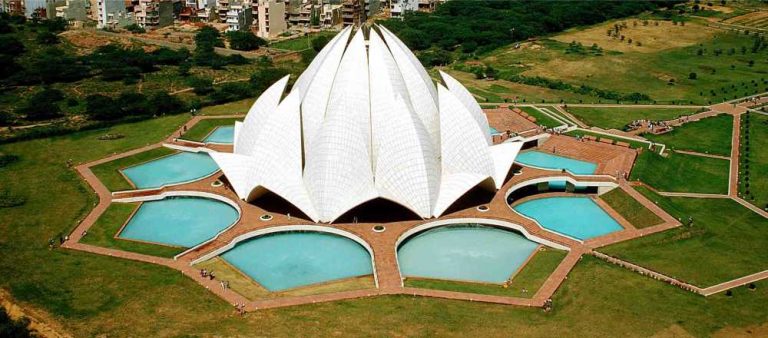


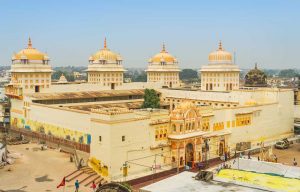
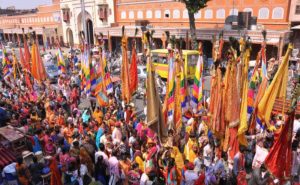
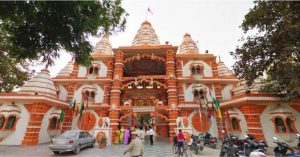
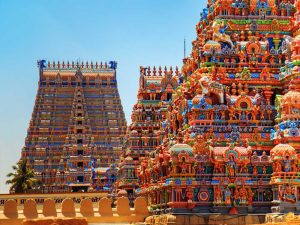
You must be logged in to post a comment.